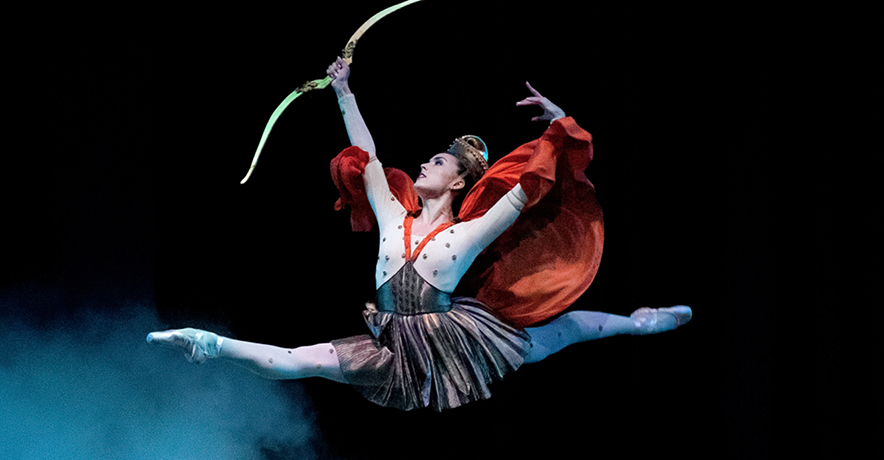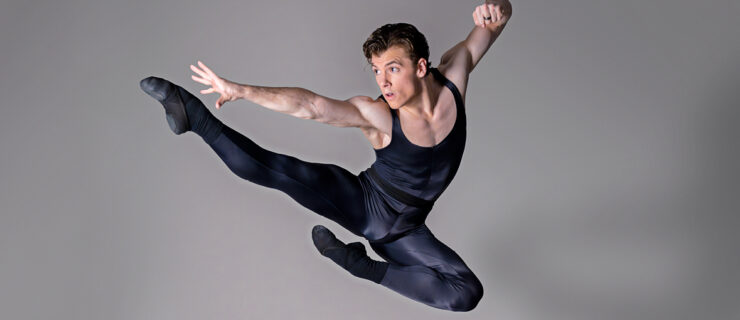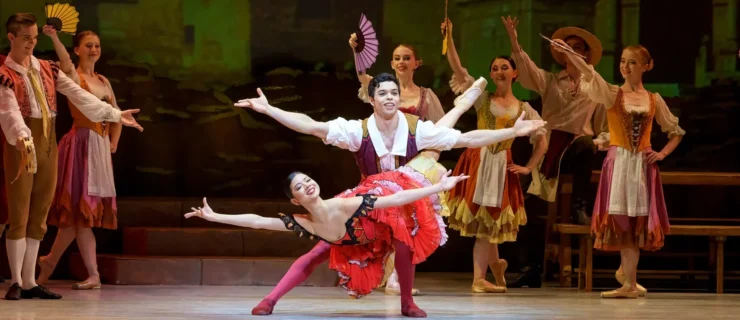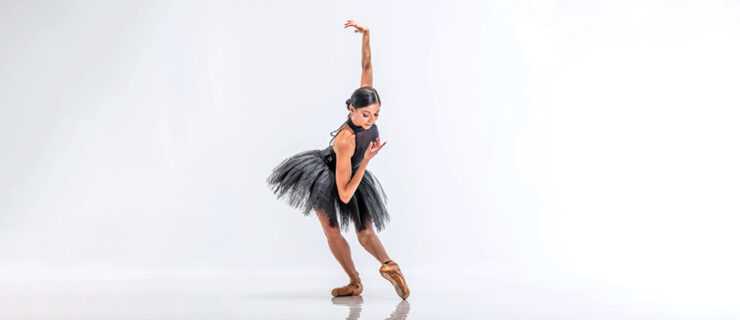NYCB Soloist Emily Kikta Has Found Her Power Onstage and Off
Onstage, Emily Kikta isn’t afraid to take up space. Dancing the Choleric variation in George Balanchine’s The Four Temperaments, she enters with a bang, propelling herself across the Koch Theater stage, throwing out razor-sharp arabesques and hitch-kicks with wild fierceness. But in rehearsal for the role a few weeks earlier, the New York City Ballet soloist was thoughtful and down-to-earth. Peeling off a down vest to reveal a classic black leotard and torn pink tights, she turned to repertory director Katey Tracey. “Pray for me,” she said, laughing, before jumping in.
At 5′ 10″, Kikta is one of NYCB’s taller female dancers, a fact that doesn’t faze her but has affected the kinds of opportunities she’s been given in the company. Her repertoire is made up of athletic soloist roles, like Dewdrop in Nutcracker, the tall girl in “Rubies,” and the soloist in the first movement of Brahms-Schoenberg Quartet. “She has this gentleness that is not commonly seen onstage, because a lot of her roles are more power-forward,” says fellow NYCB soloist Miriam Miller. “But her assurance and confidence in the studio and outside is something that I really admire.”
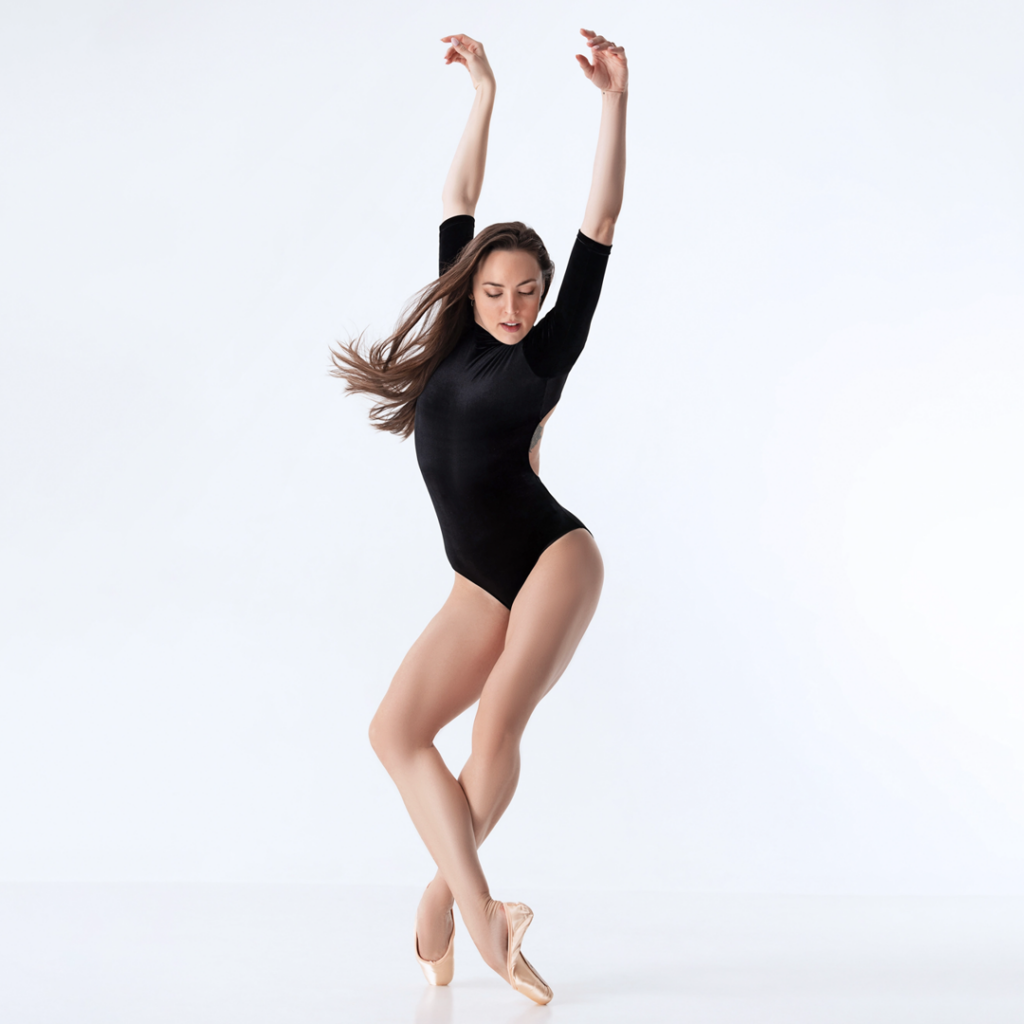
For Kikta, 31, finding the same fearlessness offstage that comes to her naturally onstage has been hard-earned. Her journey since joining the company in 2011 has been filled with ups and downs, but her eagerness to keep pushing herself has paid off. Kikta, who was promoted to soloist in 2022, also holds an MBA from Pace University and co-runs a dance film production company with her husband, NYCB principal Peter Walker. “With how versatile she is as a dancer, she’s just as versatile off the stage with her skill set, her intelligence, her enthusiasm for different things,” says NYCB artistic director Jonathan Stafford, referencing Kikta’s work mentoring female choreography students at the School of American Ballet and serving on the company’s Dancer Wellness Committee. “She’s that go-to person. When we have a project that needs to be done, the first name that pops into my head is Emily Kikta.”
From Comp Kid to Big City Ballerina
Originally from Pittsburgh, Kikta was born into an artistic family. Her father is a classical guitarist and her mother is a ballet teacher. Though her three older brothers went into more traditional fields—two are in the military and one is a lawyer—Kikta says that once her mom started bringing her to the studio as a toddler, “I kind of never left.” Kikta’s early training took place at the Thomas Studio of Performing Arts, a competition studio that required its company members to study—and compete in—tap, jazz, lyrical, gymnastics, hip hop, rhythmic gymnastics, and baton twirling, in addition to ballet. “It definitely informed my ballet career,” says Kikta. “Today, there are very few movement styles that make me feel nervous or embarrassed or timid.”
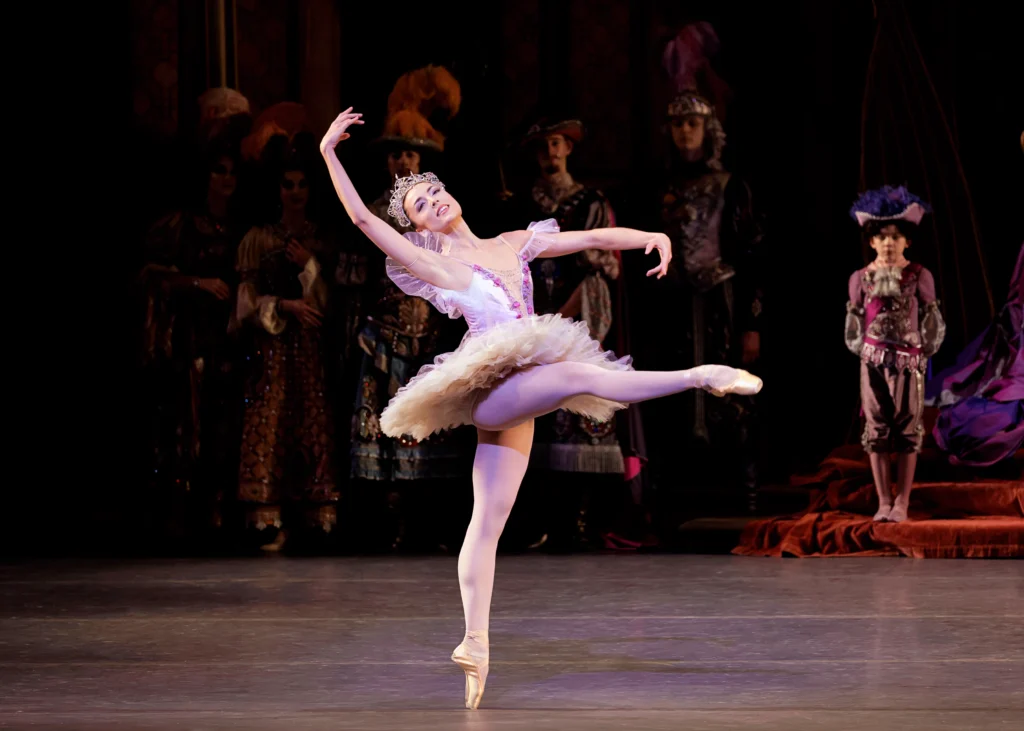
Yet Kikta was most attracted to the formal structure of ballet. She supplemented her training with classes at the Ballet Academy of Pittsburgh and, in 2006, attended her first SAB summer program. In 2008, she moved to New York City to study at the school full-time. When she was 17, Kikta was accepted into NYCB as an apprentice, and her life changed all at once: She graduated high school early, enrolled part-time at Fordham University, and moved out of the dorms and into an apartment, living alone for the first time. The transition was not easy. Kikta had a difficult time adjusting to the competitiveness of company life, and felt a lack of community. “I think things started to shift when I stopped being very shy and timid,” remembers Kikta of her gradual adjustment. “I was always afraid.”

But just as Kikta started to find her footing, she was waylaid with injuries. She tore the same tendon in her ankle three years in a row and was frequently sidelined. “School became really important to me, because I had a separate identity,” says Kikta of her undergraduate degree in media studies and communications. In 2015, at just 22, a doctor told her that even with surgery she’d likely never be able to do a grand jeté or grand plié again. She took the forced recovery period as an opportunity to take control of her life as a dancer. “I was struggling with anorexia,” says Kikta. “I was like, If I’m getting surgery, I’m fixing everything. I’m doing it all. And it wasn’t until I got help for [my eating disorder] that I stopped getting injured.”
This was a turning point for Kikta. “I realized I wanted to commit to this life,” she says. “I needed to strengthen myself inside and out in order to do that.”
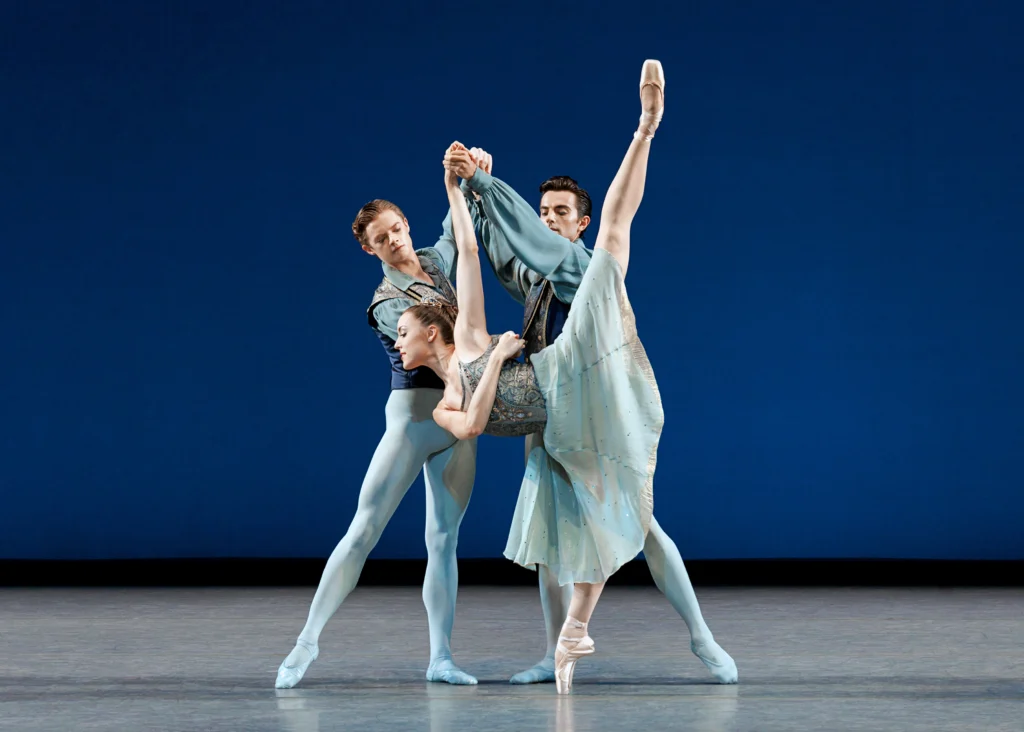
Leaving Fear Behind
By 2016, after having struggled with injuries on and off for the first five years of her career, Kikta felt strong and ready to fly. But there were more unforeseen curveballs: In 2017 NYCB’s leadership changed, and then in 2020 the company went on a monthslong hiatus due to COVID-19. The pandemic spurred Kikta to start thinking seriously about a life outside of ballet; she applied to graduate school, ultimately enrolling in an MBA program at Pace University. But she also saw the shutdown’s timing as serendipitous: Right before the pandemic, Kikta and Walker (then her fiancé) had officially launched their production company, KW Creative. The duo, who’d been friends long before they’d started dating, had been making short dance films together for years. And in 2019, Kikta had received a Virginia B. Toulmin Fellowship through New York University’s Center for Ballet and the Arts to explore dance and film. With live dance off-limits during the pandemic, Kikta and Walker’s skillset—which includes producing, directing, filming, and choreographing—became more valuable than ever, and they were hired by clients including Alvin Ailey American Dance Theater and American Ballet Theatre Studio Company.
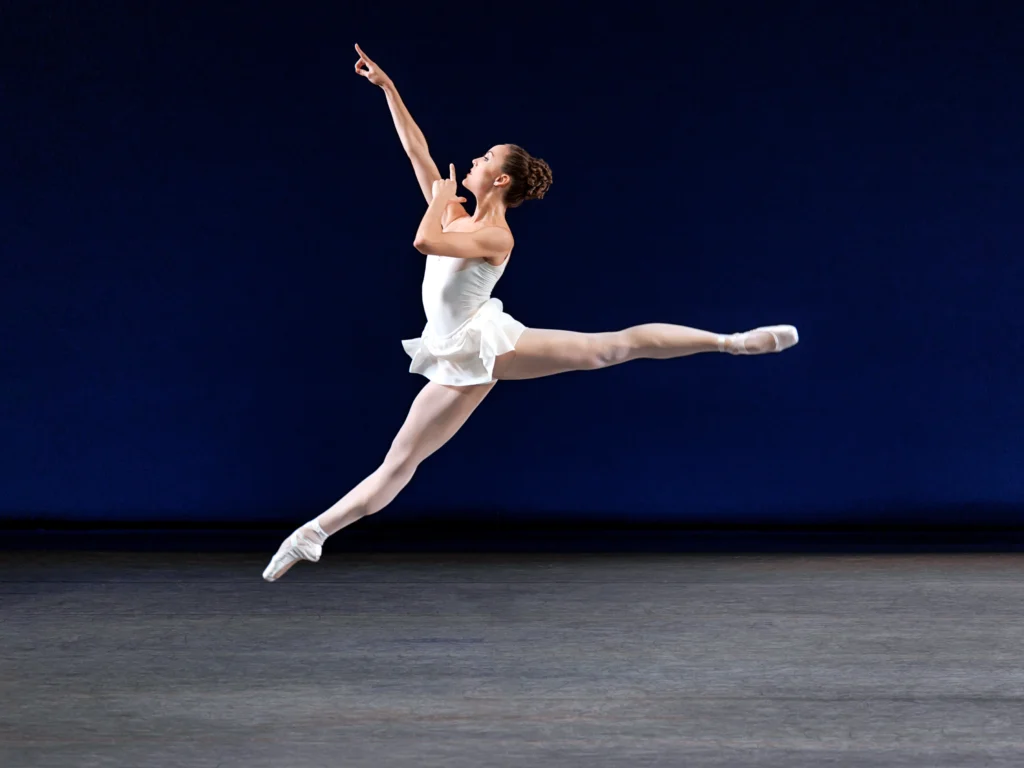
Busy with school and KW Creative, Kikta says that she spent most of the pandemic coming to terms with the fact that she might never get promoted out of the corps de ballet. “It helped my motivation, though, because I realized I still like to dance,” she says. “It doesn’t matter what my rank is.” When the company eventually returned to in-person work, Kikta was surprised to find herself in better shape—both physically and mentally—than she’d been before the pause. In January of 2022, she was promoted to soloist. “In the last few years, we’ve seen her hone her technique and harness her strength,” Stafford says of Kikta’s growth. “She can take on these leading ballerina roles in a way that she wouldn’t have been able to before because of a confidence.”
Since then, Kikta has made debuts in a flurry of ballets, including Apollo, Bourrée Fantasque, Western Symphony, and as Sugarplum in Nutcracker. “I’ve learned that so much of this career is outside of my control,” says Kikta of the roller coaster leading up to her promotion. “Everything, actually, besides what I do in the studio.”
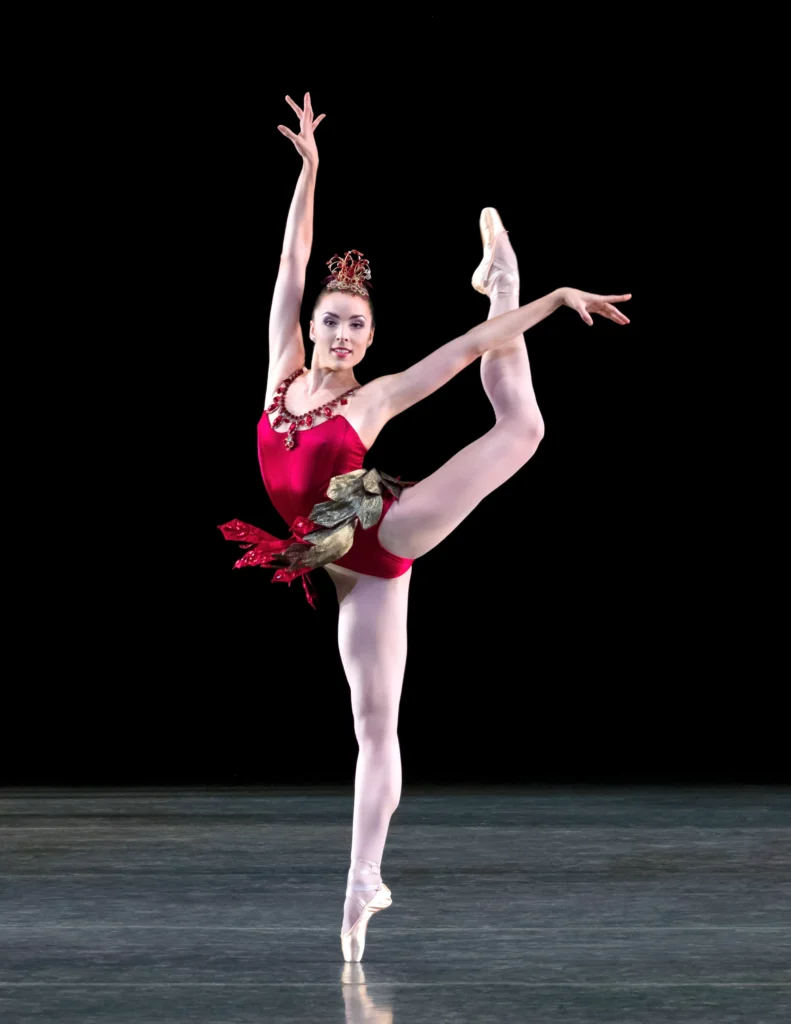
Continuing to Push
Now, Kikta is hungry to develop both her partnering skills and the more delicate side of her dancing, opportunities not always afforded to her because of her height. “She’s not somebody who’s going to hold back, so finding the person to appropriately handle her kind of movement has been hard,” says Tracey. She adds that Kikta’s recent partners—Aarón Sanz, Gilbert Bolden III, and Walker—have all been excellent fits. “She has those beautiful long lines and an airy disposition,” says Tracey, who’d love to see Kikta in ballets like “Emeralds” and as Titania in Midsummer Night’s Dream. “She can find and capture some of those more introspective roles.”
Although Kikta’s rehearsal schedule is now lighter than it was when she was in the corps, she has plenty going on outside of the studio. She works with aspiring female choreographers at SAB as part of her Toulmin Fellowship, and she and Walker are continuing to build KW Creative.
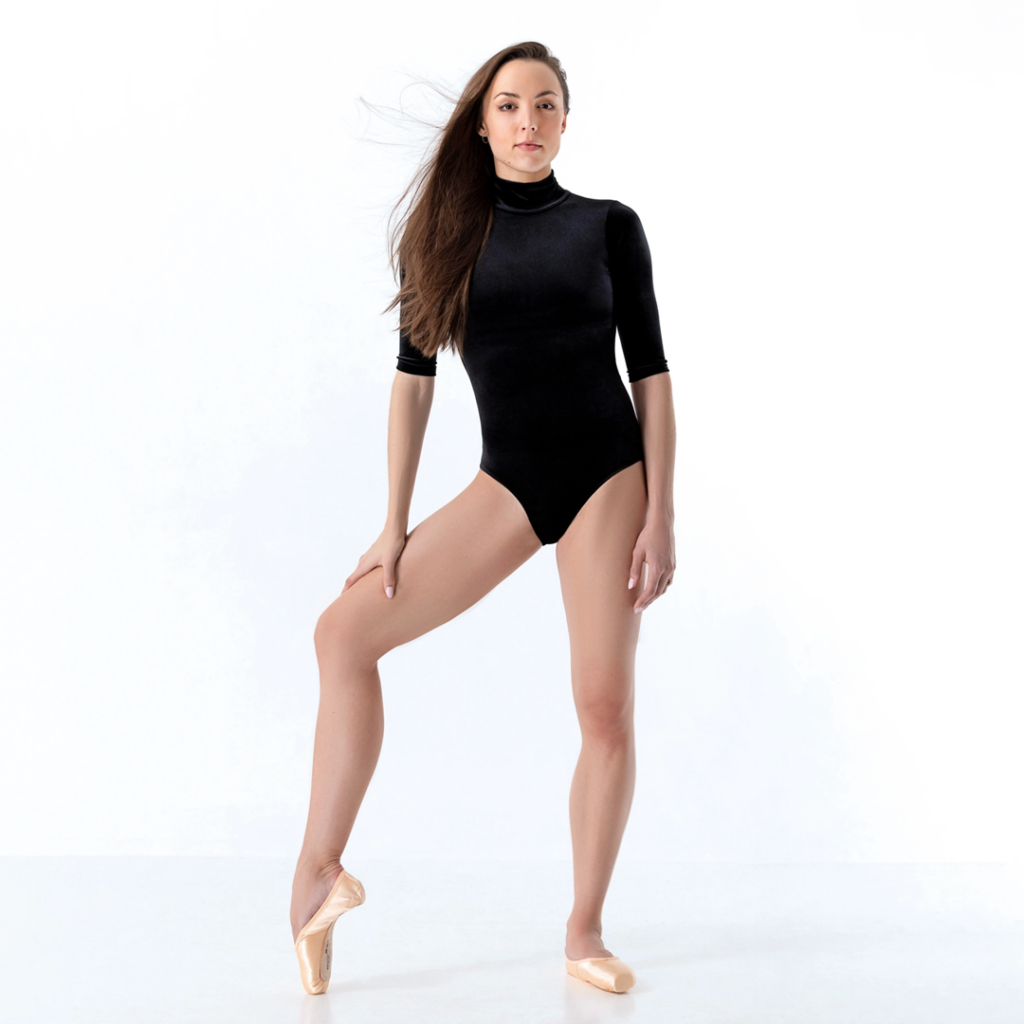
“It’s a lot of irons in the fire,” she says. “I don’t know where it’s going to take me, but I think the whole goal of my career was using this time where I have a steady job to figure out what else I like.” When she’s not working, she and Walker spend time nesting in their new apartment on Manhattan’s Upper West Side, cooking, and hanging out with their cat, Lupin. “She’s just a very smart, resourceful person, and very well-rounded,” says Tracey. “There’s so much to her, and at first she doesn’t show it all. But then she reveals it, and I love that about her.”
